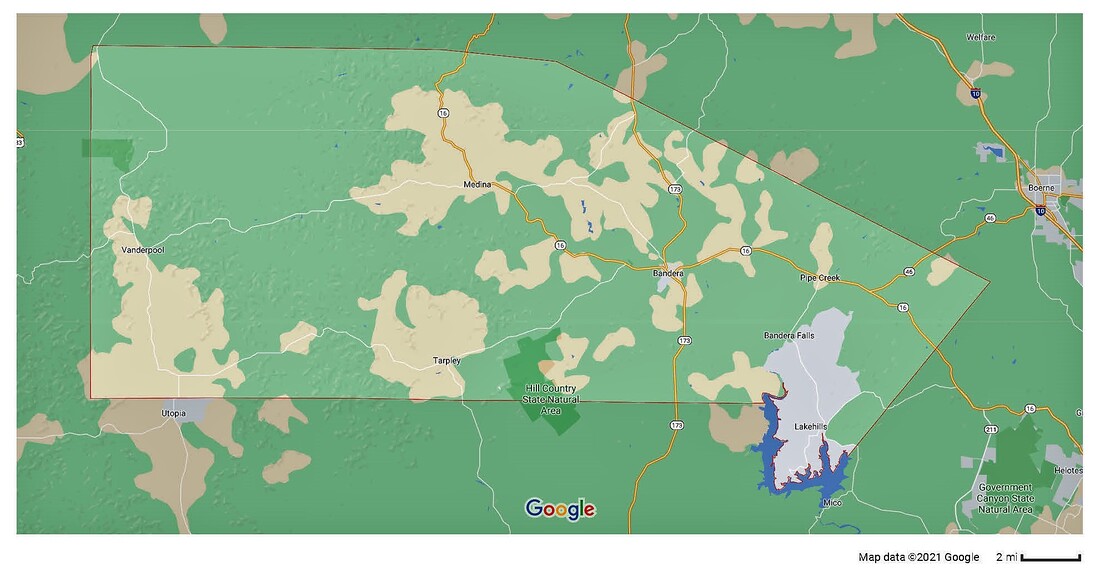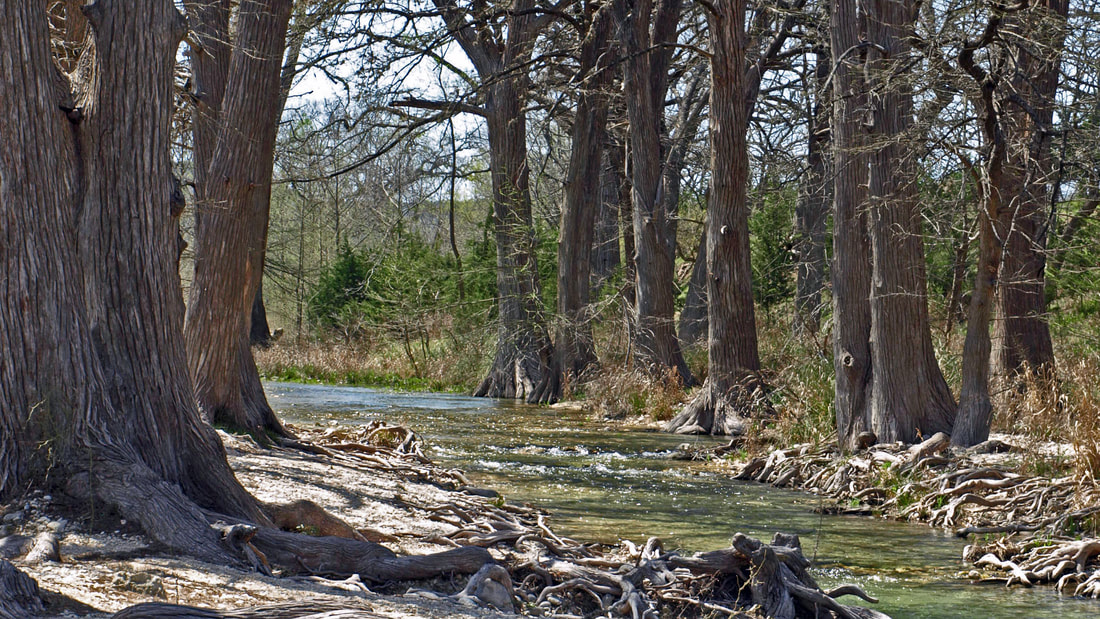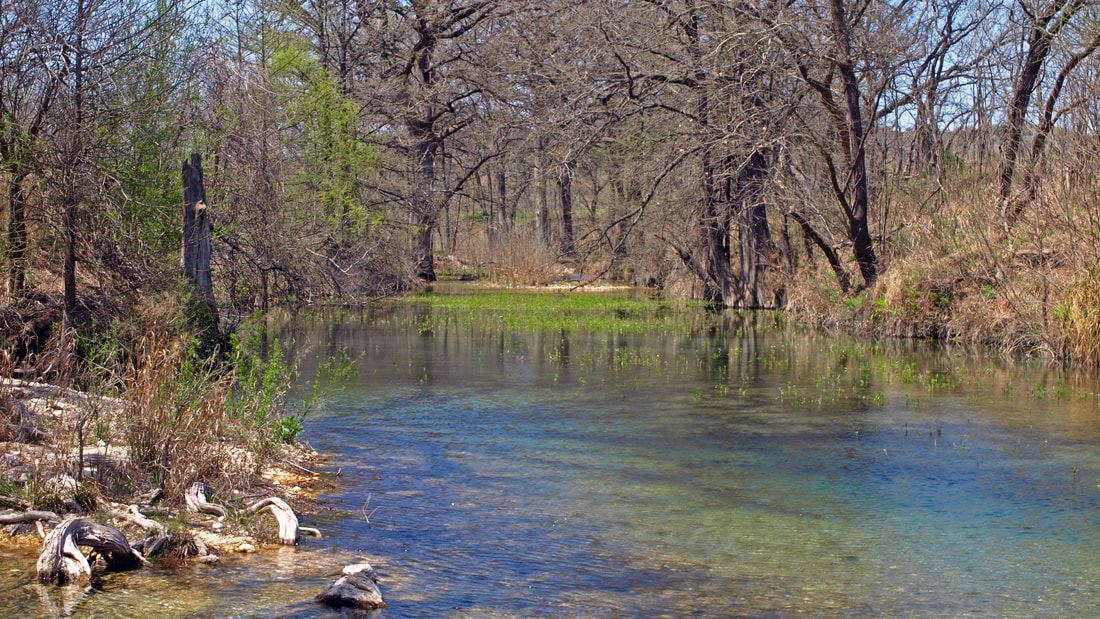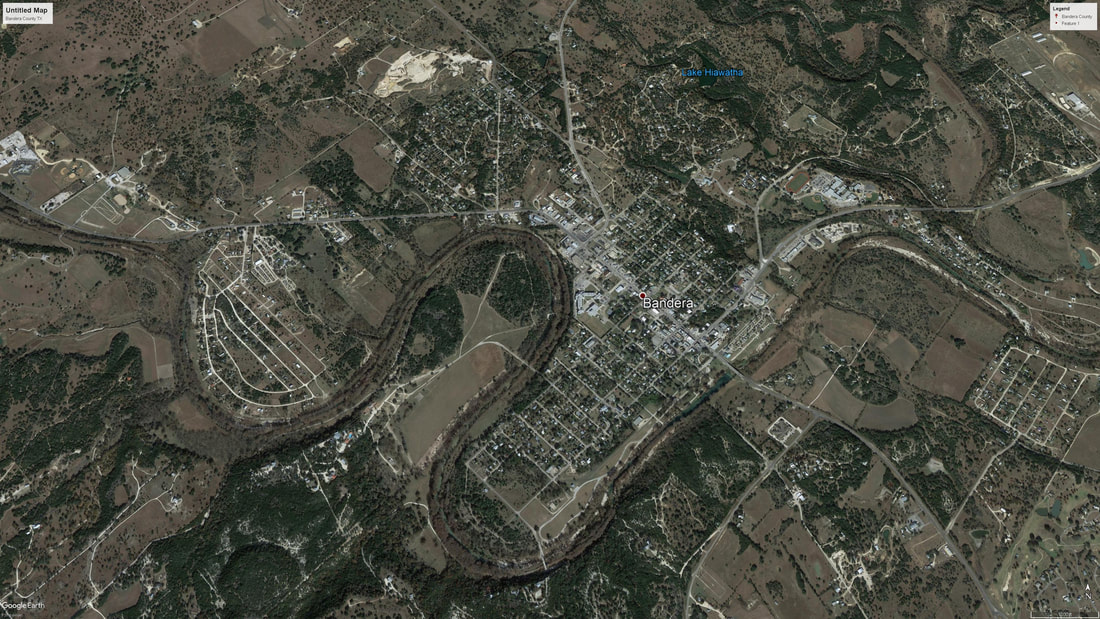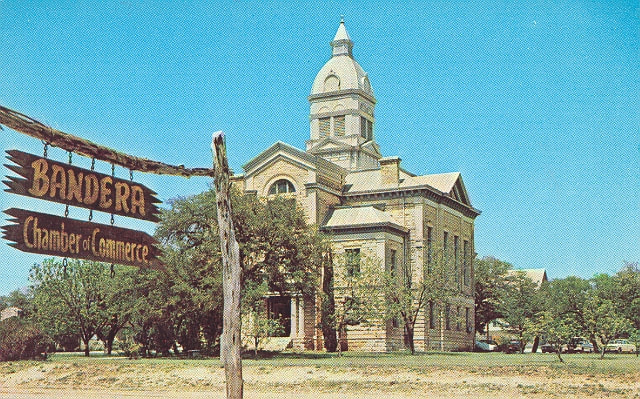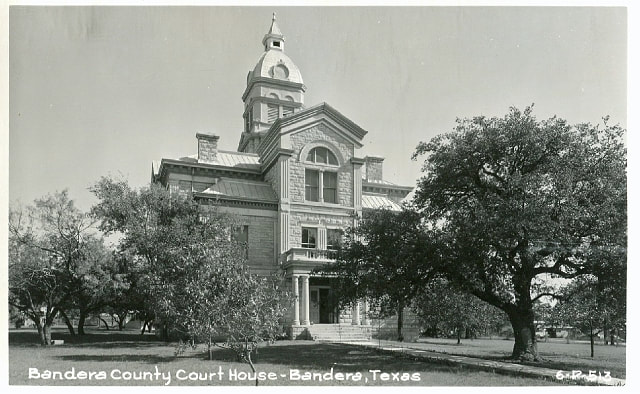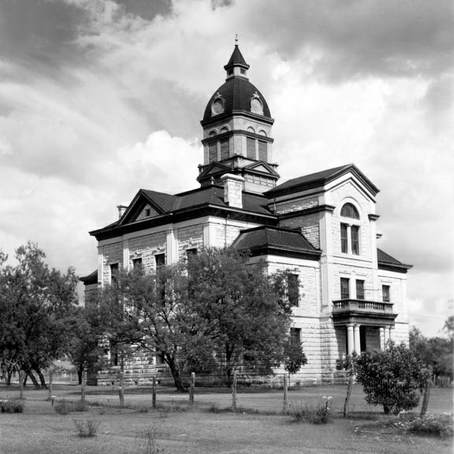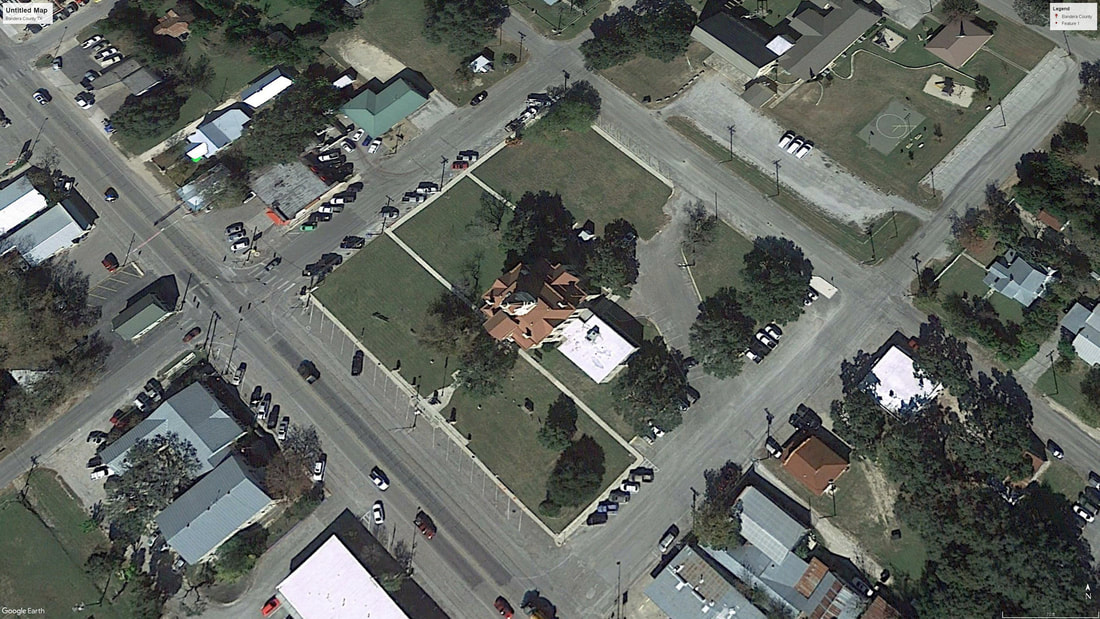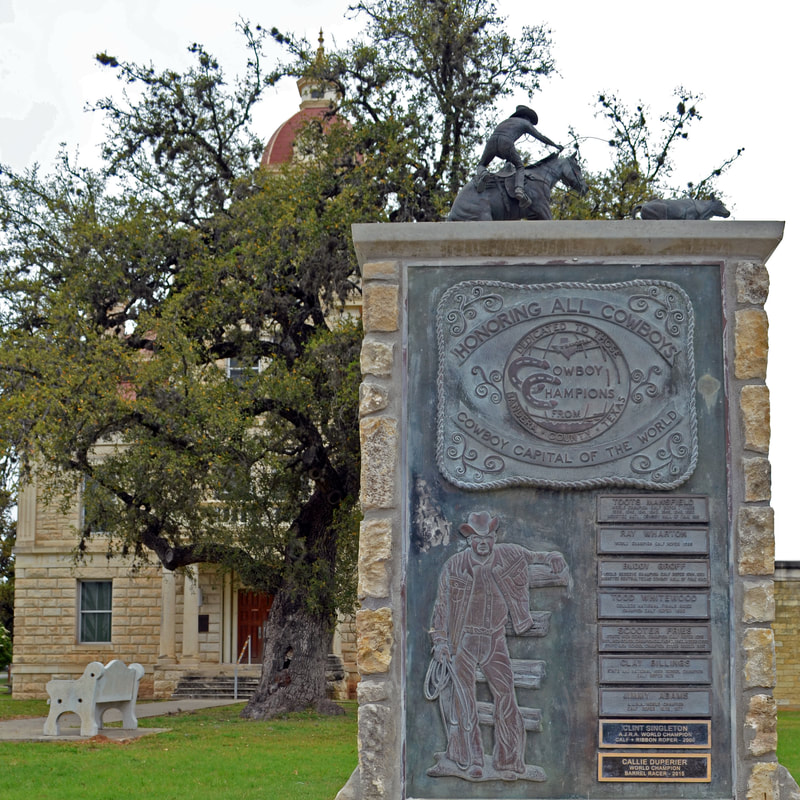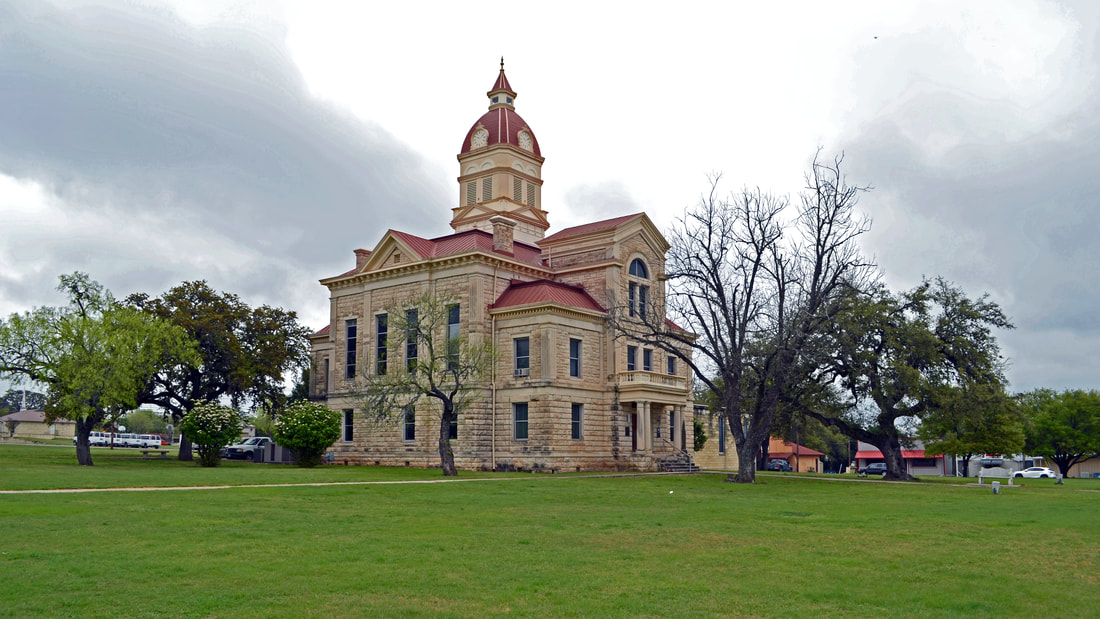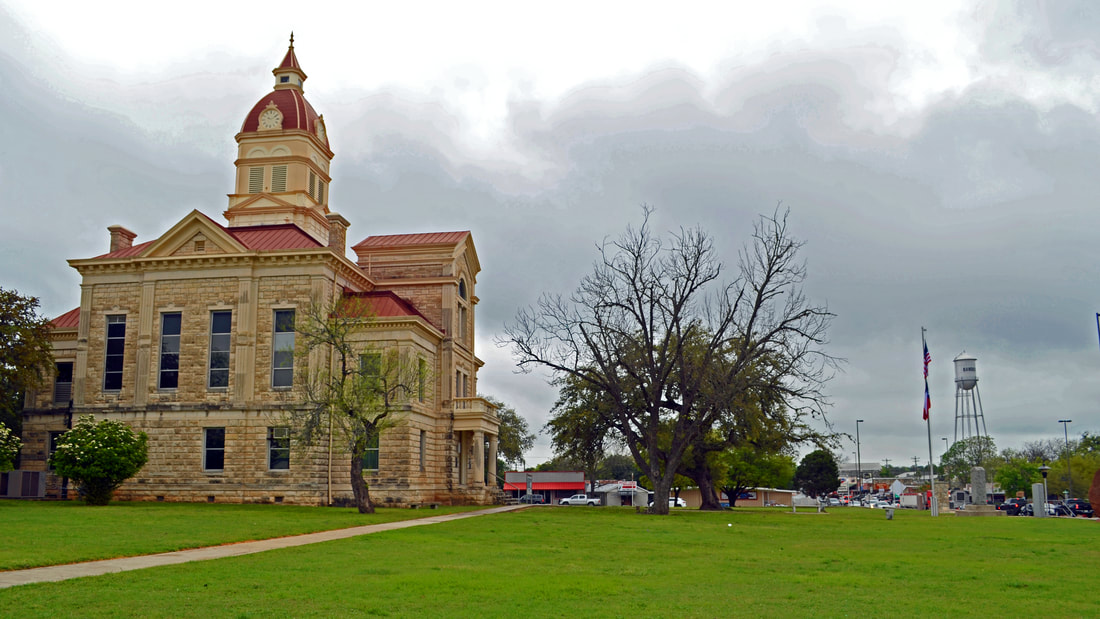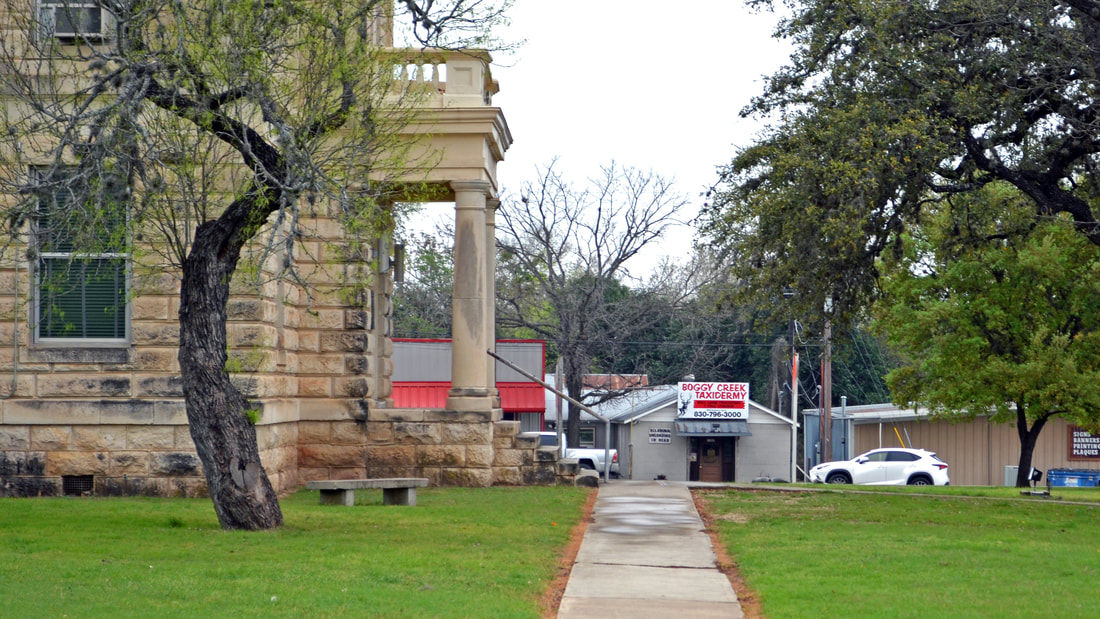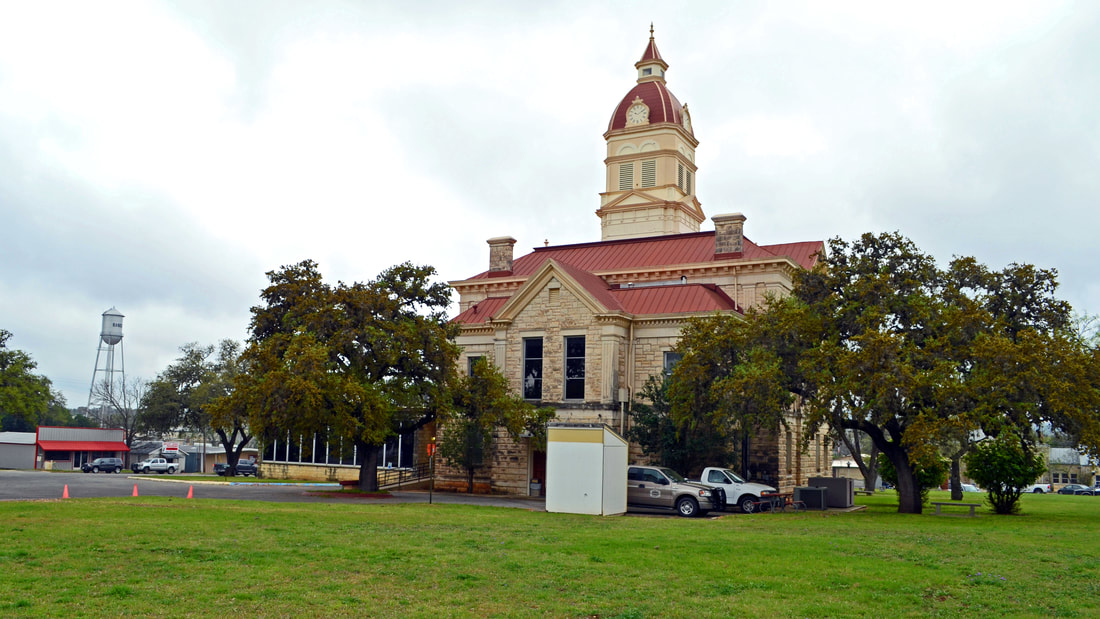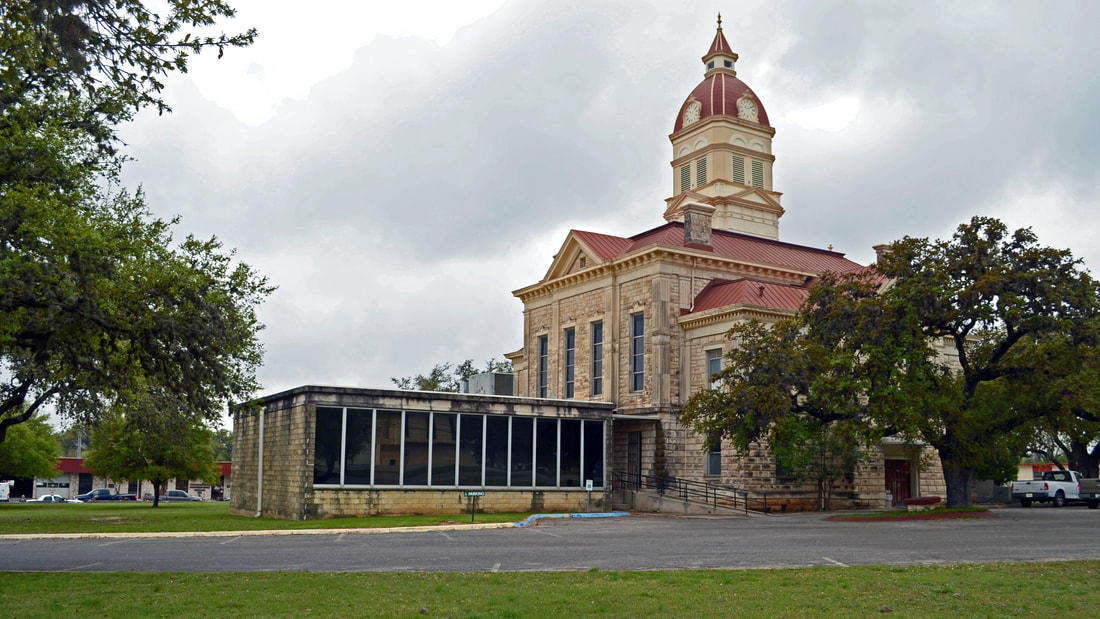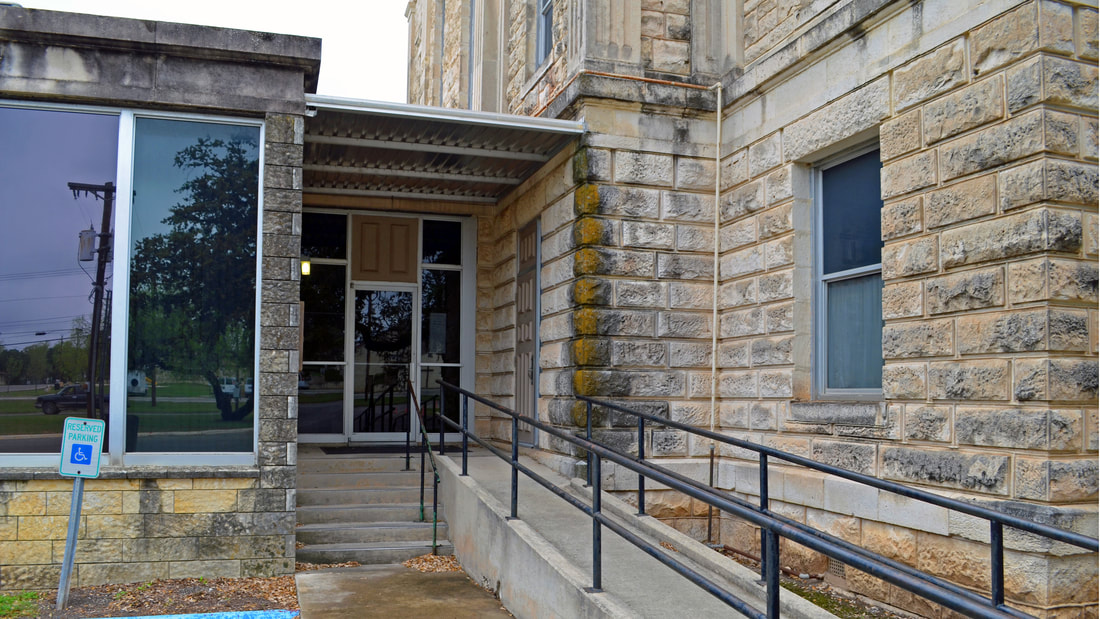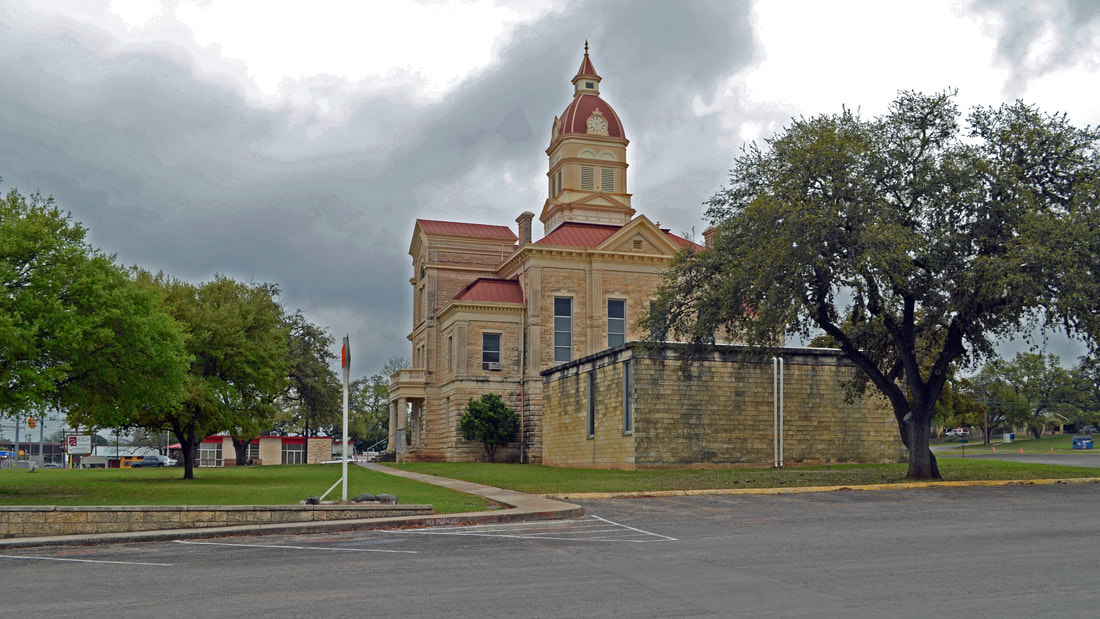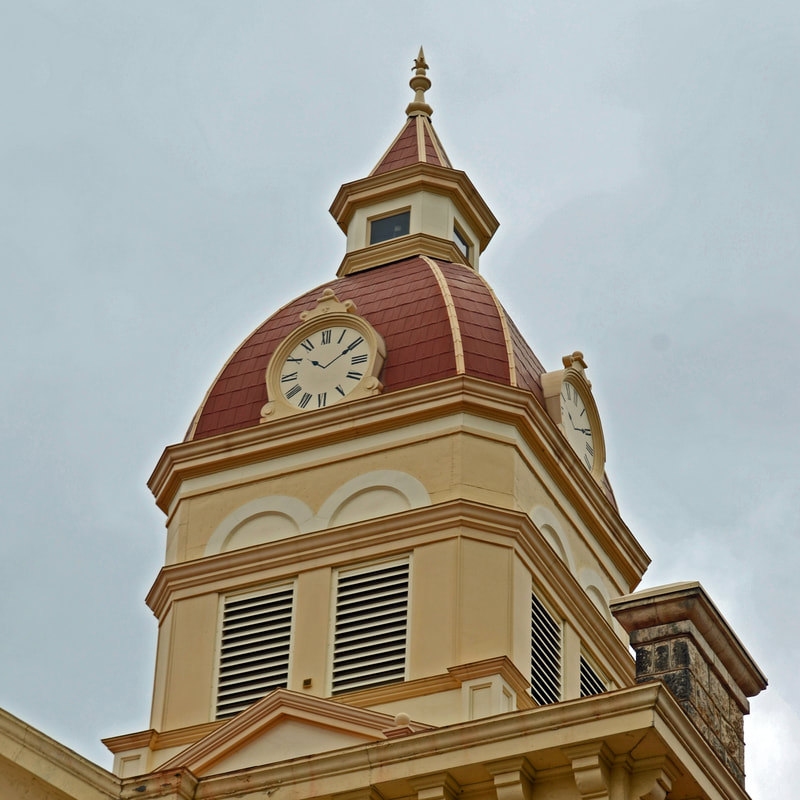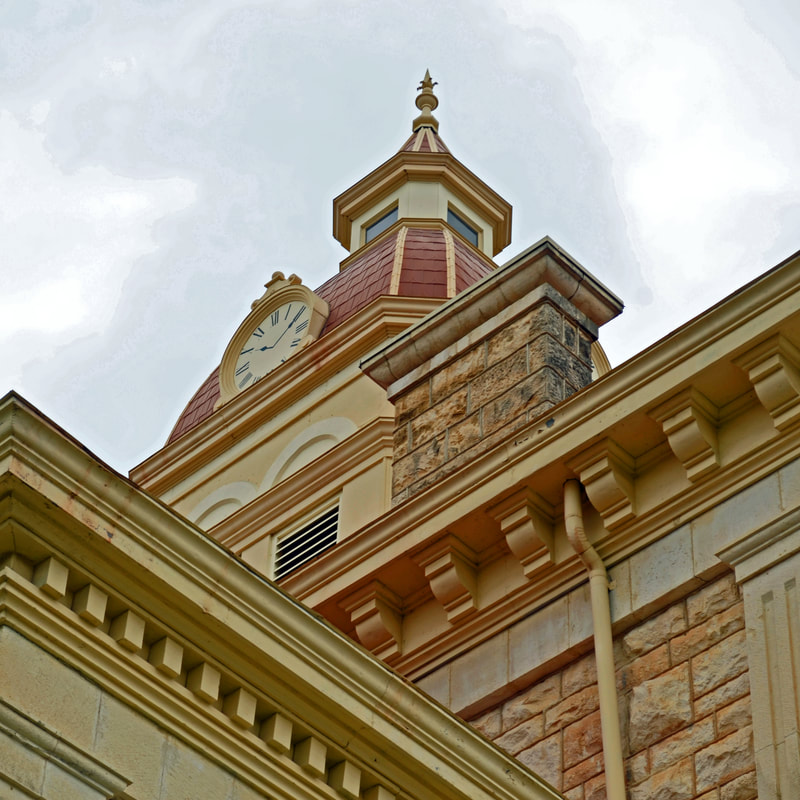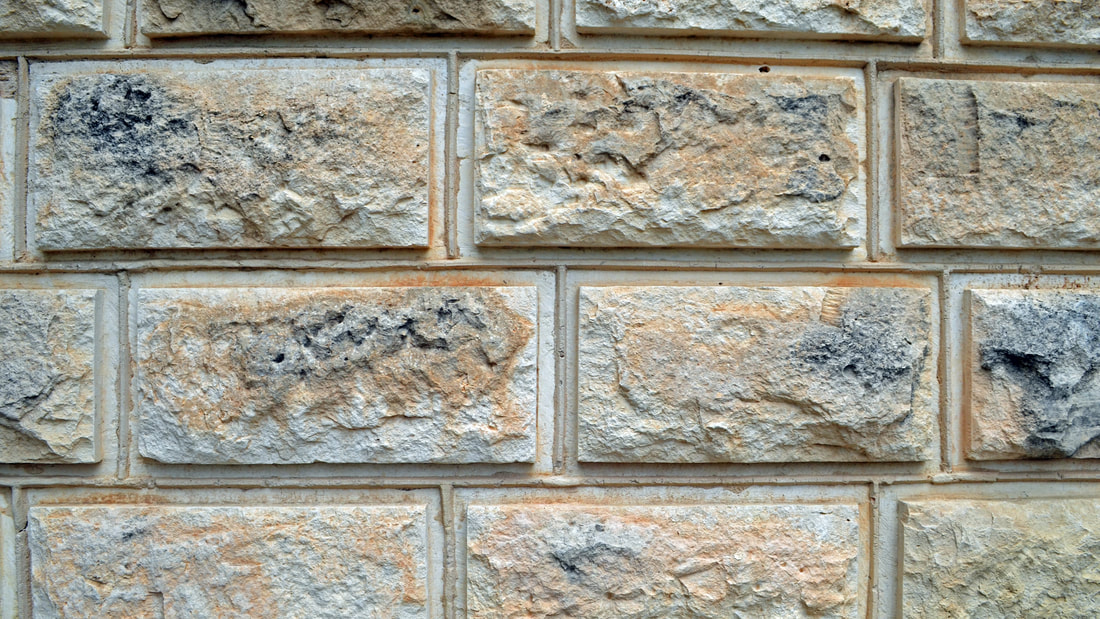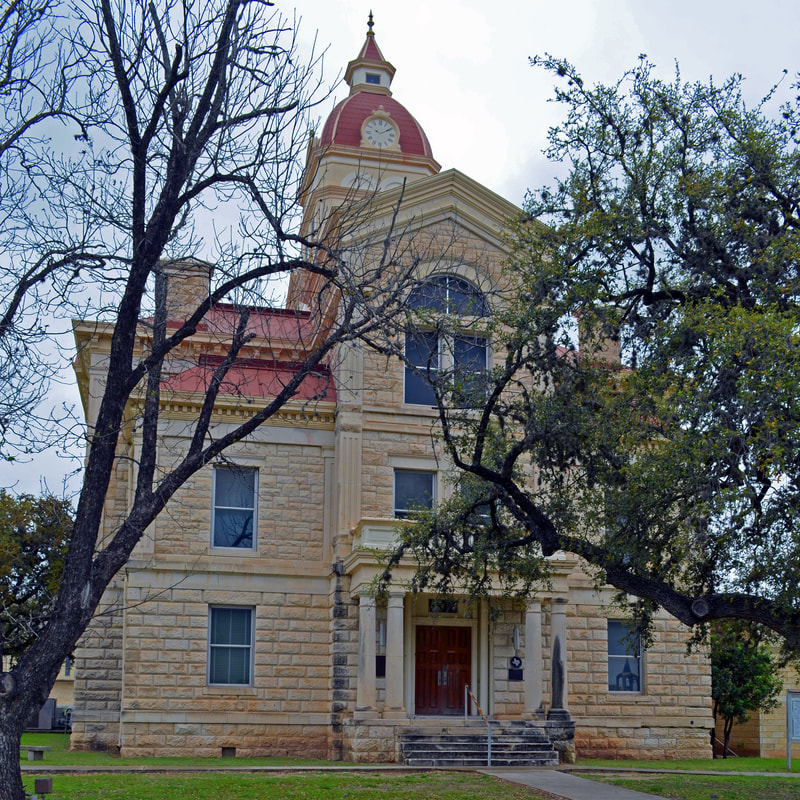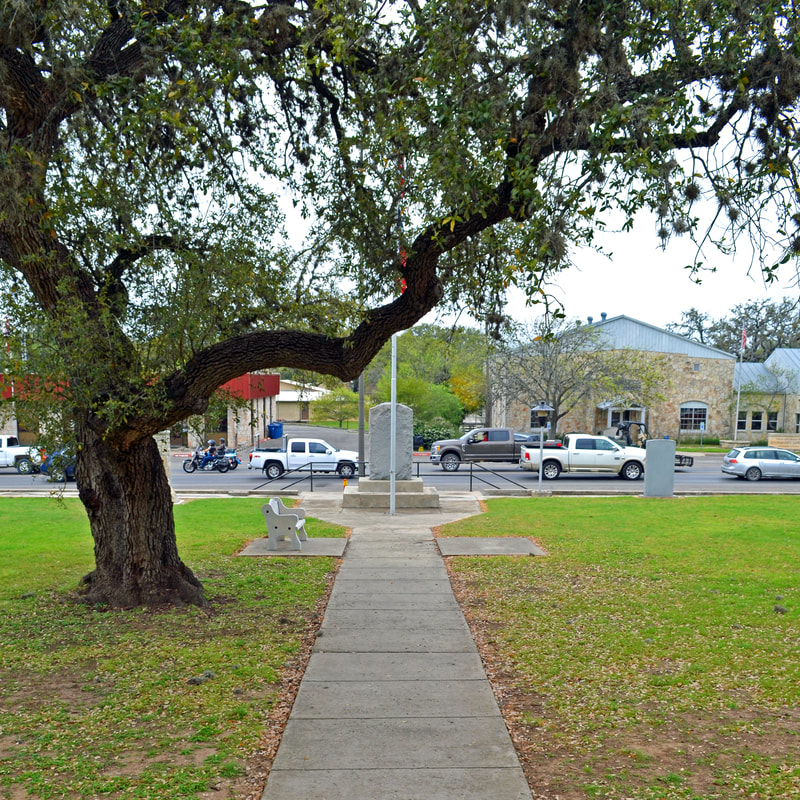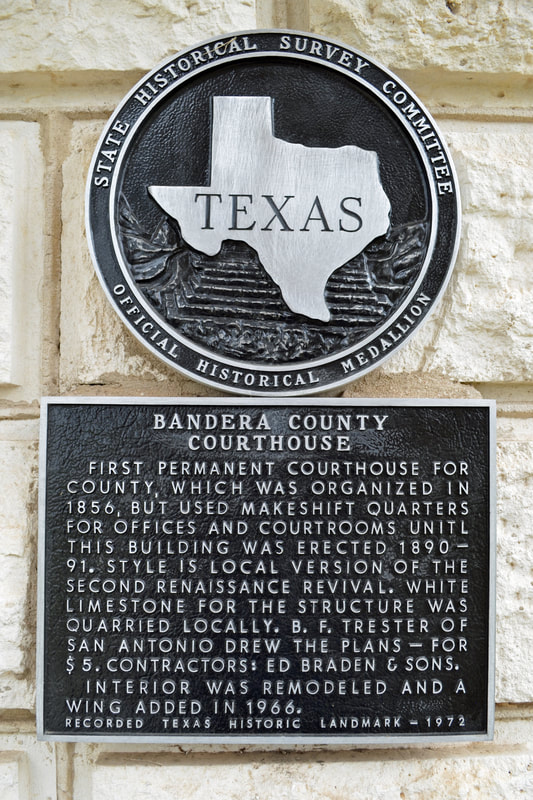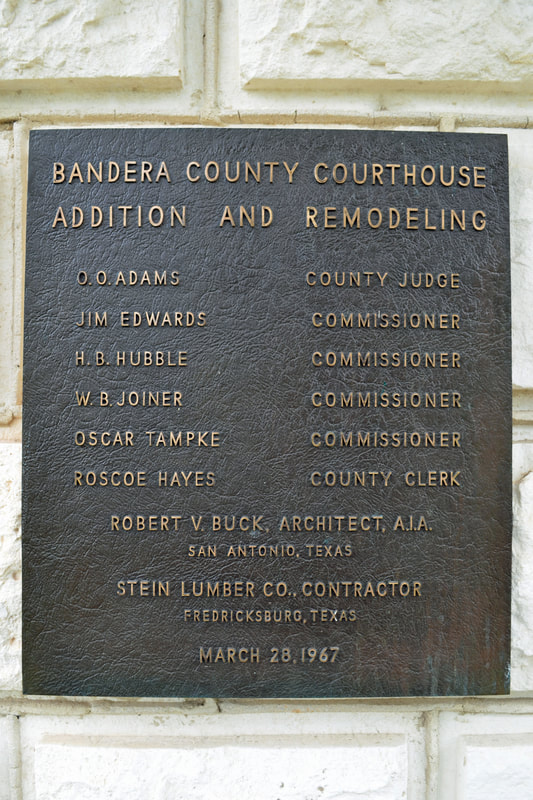042 of 254: Bandera County Courthouse, Bandera, Texas. County Population: 20,485
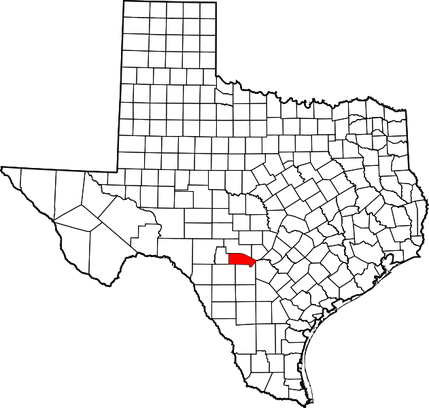 Bandera County, Texas
Bandera County, Texas
"Bandera County is twenty-five miles northwest of San Antonio in the Edwards Plateau region of southwest Texas. It is bordered by Kerr and Kendall counties on the north, Bexar County on the east, Medina and Uvalde counties on the south, and Real County on the west. The county seat and largest town is Bandera. Bandera County comprises an area of 793 square miles, with elevations that range from 1,200 to 2,300 feet. The western part of the county is drained by the Sabinal River and the eastern part by the Medina River.
"The first Europeans to set foot in what is now Bandera County were the Spanish, who probably explored the region in the early eighteenth century. Bandera is Spanish for 'flag,' and there are a number of colorful accounts as to how the county was named.
"In 1853, James and DeMontel surveyed and platted the town of Bandera, and in early 1853 A. M. Milstead, Thomas Odem, P. D. Saner, and their families camped along the river and began making cypress shingles. By the fall of the same year the firm of James, Montel and Company built a horse-powered sawmill and opened a commissary store.
On January 25, 1856, the legislature marked off Bandera County from portions of Bexar County; the new county was formally organized on March 10, 1856."
Christopher Long, "BANDERA COUNTY," Handbook of Texas Online
I visited Bandera County and photographed the courthouse on March 27, 2010 and on March 24, 2018.
"The first Europeans to set foot in what is now Bandera County were the Spanish, who probably explored the region in the early eighteenth century. Bandera is Spanish for 'flag,' and there are a number of colorful accounts as to how the county was named.
"In 1853, James and DeMontel surveyed and platted the town of Bandera, and in early 1853 A. M. Milstead, Thomas Odem, P. D. Saner, and their families camped along the river and began making cypress shingles. By the fall of the same year the firm of James, Montel and Company built a horse-powered sawmill and opened a commissary store.
On January 25, 1856, the legislature marked off Bandera County from portions of Bexar County; the new county was formally organized on March 10, 1856."
Christopher Long, "BANDERA COUNTY," Handbook of Texas Online
I visited Bandera County and photographed the courthouse on March 27, 2010 and on March 24, 2018.
Bandera County Courthouse 1890
"The three-story rusticated cut limestone courthouse built in 1890-91 with a central clock tower, is the focal point of the Bandera public square, and the dominating architectural feature of the town. The Second Renaissance Revival-style structure was built of locally quarried white limestone.
"The present courthouse was designed by a prolific San Antonio architect, B.F. Trester, Jr. In a two-year period, Trester also designed the Uvalde County Courthouse, a two- story stone school in Kerrville, Methodist Female Seminary in San Antonio, a two-story brick store in Beeville, and the Uvalde Opera House (N.R. 1978) before his death in March of 1891. Builders for the courthouse were Ed Braden and Sons, with Frankel and Hayden shown as supervising architects.
"A one-story jail was built on the square behind the courthouse in 1938, and a one-story limestone office addition was built to the east in 1966 when the courthouse was remodeled and the windows were replaced. Even with these changes, the character and mass of the building are important to the scale of the tiny town."
From the National Register listing narrative
"The present courthouse was designed by a prolific San Antonio architect, B.F. Trester, Jr. In a two-year period, Trester also designed the Uvalde County Courthouse, a two- story stone school in Kerrville, Methodist Female Seminary in San Antonio, a two-story brick store in Beeville, and the Uvalde Opera House (N.R. 1978) before his death in March of 1891. Builders for the courthouse were Ed Braden and Sons, with Frankel and Hayden shown as supervising architects.
"A one-story jail was built on the square behind the courthouse in 1938, and a one-story limestone office addition was built to the east in 1966 when the courthouse was remodeled and the windows were replaced. Even with these changes, the character and mass of the building are important to the scale of the tiny town."
From the National Register listing narrative
